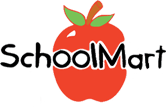How EdTech Is Expanding Teaching Practices
Teaching requires the ability to communicate, adapt and work with many learning styles, and changes in education are coming at a much faster rate. As students’ needs and expectations have risen, so have the demands placed on teachers’ shoulders. Currently, educators are expected to differentiate their instruction, use data-driven instructional practices, address students’ social and emotional challenges, close achievement gaps, and ensure that all students are prepared for the 21st-century economy. Here, the qualified professionals at SchoolMart discuss how EdTech is shifting the education industry, and the impact technology will have on future generations.
EdTech Is a Great Tool to Improve Lessons
Technology can aid educators tremendously when it comes to adapting lesson plans, giving students who may not feel comfortable learning in a traditional environment the chance to fully participate and feel comfortable. Common uses of classroom technology serve to improve teachers’ existing lessons, and can also largely alleviate the stresses and demands of educators by providing innovative educational tools. For example, projector slideshows can upgrade lessons with audiovisual elements such as diagrams, photos and videos. Sites and programs such as Google Classroom, Teachers Pay Teachers and IBM Teacher Advisor upgrade lessons with materials and learning activities that are both engaging and aligned with specific student needs. Educational YouTube videos are also a great way to help boost educational entertainment in classrooms and allow students to continue their learning at home with ease. While technology does not fundamentally change education, it enhances traditional learning by providing instructional value and ease for both teachers and students.
EdTech Provides Data and Resources to Facilitate Growth
Not only does educational technology help create an innovative learning environment for students, teachers, administrators and school districts can reap the benefits of educational technology by utilizing data to further understand the learning needs of students. Adaptive software platforms such as Lexia Core5 Reading and Newsela cater to the specific needs of students, and save their progress and questions for teachers to utilize as a resource to improve future lesson plans. In a time where much of traditional learning is now being completed online, staying ahead of the curve with innovative technology can ensure that your students are able to stay on track with their progress and continue to grow.
Additionally, in many blended learning instructional models, teachers can create online videos to replace their in-person lectures, so students can learn the foundational content for each unit independently. Many teachers find that reallocating class time through blended learning provides the opportunity for other valuable learning activities such as problem-based learning, project-based learning, or small group instruction. Incorporating educational technology into teaching creates more time for personal interactions that foster caring and supportive relationships in the classroom. As an educator, your primary goal is to provide a space for students to excel, and in the modern workplace, their knowledge of technology is likely a skill that will set them apart from their peers.
Enhance Your Classroom With the Educational Technology Professionals at SchoolMart
As you prepare students for the modern workplace, incorporating technology into the classroom can improve traditional lessons, provide students with a tailored learning plan and give teachers the opportunity to adjust their lesson plans based on data and feedback. As technology continues to grow, edtech is likely going to become a staple in many classrooms, and being an early adapter can yield a variety of benefits. To learn more about the benefits of educational technology in the classroom, contact the edtech professionals at SchoolMart today.
